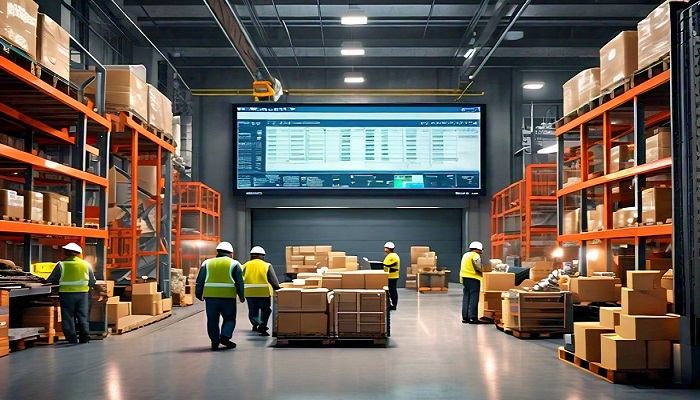Business
How Orchestration is Redefining the Future of Supply Chain Management

- Supply chain orchestration integrates all elements of the supply chain, leveraging technologies like AI, IoT, and blockchain to enhance efficiency and agility.
- Real-time examples, such as Walmart’s inventory management and Tesla’s agile supply chain, highlight the benefits of advanced orchestration strategies in adapting to market demands and improving operational performance.
Today’s world is interconnected, and the difficulty of supply chains grows. Businesses aren’t just managing their supply chains, they’re orchestrating them using the precision and interconnectedness that used to be an idea of science-fiction. Future supply chain management isn’t only about being able to withstand the pressures of technological advances and globalization. It’s about flourishing with the orchestration of strategic plans. This article focuses on the ways that supply chain orchestration has transformed the business with real-time examples, as well as looking at the trends which will determine the future.
Understanding Supply Chain Orchestration
Supply chain orchestration refers to the act of interconnecting and co-ordinating all aspects that comprise the supply chain in order to function smoothly. In contrast to traditional supply chain management which is focused on optimizing specific components like logistics, procurement and inventory, orchestration is a way to bring all of these components to create a seamless system. This method ensures that each element within the supply chain functions well, improving overall efficiency and agility.
The Shift Towards Orchestration
The move towards orchestration has been prompted by many aspects, including technological developments as well as increased consumer expectations and the necessity for resiliency to withstand interruptions. Businesses are shifting away from separate processes to systems that offer real-time transparency and reactivity.
Real-Time Example: Walmart’s Integrated Supply Chain
Walmart, the world’s largest retail company, has demonstrated the success of logistics orchestration. The retailer has invested a lot in the latest technology that will help streamline the supply chain processes. Walmart’s sophisticated inventory management system includes real-time information to improve inventory levels in all of its distribution centers as well as stores. The system makes sure that the products are in stock when and where customers want them, which reduces out-of-stock and other situations.
Technology Driving Orchestration
A variety of technologies are at the leading edge of orchestrating supply chains that are changing the way companies run their supply chain operations. They include:
- Artificial Intelligence (AI) and Machine Learning (ML): AI and ML algorithms examine huge quantities of data to anticipate the demand for goods, improve routes as well as automate decision-making processes. For instance, UPS uses AI to optimize routes for delivery, cutting down on millions of gallons of gasoline and also reducing carbon emissions.
- Internet of Things (IoT): IoT devices offer real-time monitoring and tracking of the movement of goods across the distribution chain. Businesses such as Maersk use IoT sensors to identify containers to ensure the safety of the cargo, and enhance the efficiency of operations.
- Blockchain: Blockchain technology gives transparency and a permanent transaction record, which improves the security and traceability of transactions. IBM’s Food Trust blockchain is helping organizations such as Walmart as well as Nestle verify the authenticity of food products and improve the safety of their products and ensuring conformity.
- Robotic Process Automation (RPA): RPA automates repetitive tasks such as entering data or processing orders and frees human resources to focus on more strategic tasks. Businesses such as Amazon utilize RPA to improve warehouse efficiency and enhance delivery of orders.
Real-Time Example: Nike’s Data-Driven Approach
Nike is a renowned sportswear company, makes use of analytics based on data to boost its orchestration of supply chains. Nike makes use of advanced analysis to accurately forecast demand and alter production schedules in line with. Nike’s Direct to Consumer (DTC) strategy, which is focused on direct sales to consumers via online platforms as well as physical stores, is based on an extremely responsive supply chain that is able to quickly adjust to market changes.
Challenges and Opportunities
Supply chain orchestration can provide several benefits, it poses challenges for companies to overcome. They include:
- Intricacy of Integration: Integration of diverse technology and systems can be costly and complicated. Businesses must make sure that their systems work and communicate well between each other.
- Information Security: In the midst of increased data sharing and integrating is the threat of cyberattacks and data breaches. Enterprises must put in place robust security measures for protecting the sensitive data.
- Changes in Regulations: Supply chains across the globe are subject to a myriad of rules as well as compliance requirements. The companies must keep themselves informed of regulations and make sure that they are in compliance.
In spite of these issues the potentials offered through supply chain orchestration can be significant. Organizations that are able to successfully apply orchestration strategies will be able to achieve higher effectiveness, flexibility and durability, thereby making them more suited for success over the long term.
Real-Time Example: Tesla’s Agile Supply Chain
The supply chain of Tesla is an excellent instance of efficiency and coordination. Its strategy for managing supply chain operations is based on close cooperation with suppliers and an emphasis on vertical integration. The company’s ability to swiftly adapt production schedules and to adapt to changing demand from the market is testament to the effectiveness of its orchestration plan. Its usage of real-time data analysis and monitoring allows it to keep an edge over competitors in the field of electric cars.
Conclusion
Orchestration for the supply chain is changing the ways companies handle their business operations. It offers incredible levels of efficiency, flexibility as well as integration. Utilizing the latest technologies and implementing a comprehensive method of managing their supply chains firms can better navigate the complex supply chain environment and prepare their businesses for success in the future. While the field continues to develop, staying on top of the latest trends and adopting creative strategies will be essential for success in the current world of supply chain orchestration.























































